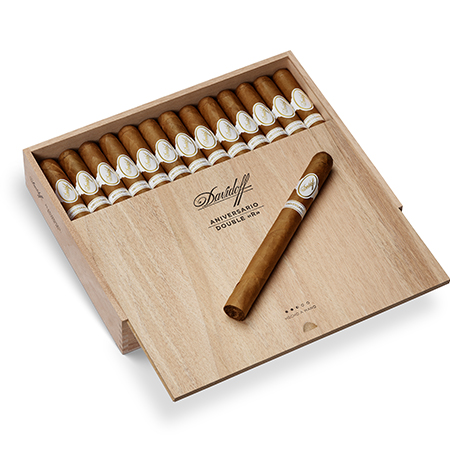Blog
Mastering the Cigar Lingo: A Guide for Enthusiasts
Stepping into the world of cigars can feel like entering a new culture with its language—what cigar enthusiasts call “cigar lingo.” Whether you’re a novice just beginning your journey or a seasoned smoker looking to deepen your understanding, getting acquainted with cigar lingo is essential. It enhances enjoyment and helps you communicate more effectively with fellow cigar lovers. Let’s dive into the critical cigar lingo and concepts that every enthusiast should know.
Basic Cigar Lingo: The Building Blocks
Understanding the basic terms of cigar lingo is not just about knowledge, it’s about feeling at home in the cigar community. These terms, often used in casual conversations among cigar enthusiasts, are the building blocks of a shared language that connects us all.
- Herf: A herf is more than just a gathering; it’s a celebration of cigars. It’s when cigar enthusiasts come together to enjoy their favorite smokes, share stories, and indulge in the camaraderie that comes with a shared passion. Whether it’s a small group in a cozy lounge or a large gathering at an event, the essence of a herf lies in the shared experience.
- Stick: While “stick” might seem simple, it’s one of the most common cigar lingo you’ll hear. It’s a casual, everyday way to refer to a cigar. “I’ve got a couple of good sticks for tonight” is a phrase you might hear among friends about to enjoy some cigars together.
- Tooth: This term refers to the texture of a cigar’s wrapper. A “toothy” wrapper has a bumpy texture, often a sign of rich flavor and high-quality tobacco. The bumps are oil pockets that appear during fermentation, adding to the complexity of the cigar’s taste.
Cigar Components: The Anatomy of a Cigar
Understanding a cigar’s components is crucial to truly appreciating it along with the cigar lingo. Each part plays a crucial role in the overall smoking experience.
- Wrapper: The wrapper is the outermost leaf of the cigar and plays a significant role in determining its flavor and appearance. In cigar lingo, wrappers are often categorized by their color and flavor profile:
- Connecticut: Light and creamy, Connecticut wrappers are often used in mild cigars. They provide a smooth smoking experience and are great for beginners.
- Habano: Rich and spicy, Habano wrappers are typically found on medium to full-bodied cigars. They offer a robust flavor that can be enjoyed by those who prefer a bolder smoke.
- Maduro: Dark and sweet; Maduro wrappers age longer, giving them deep color and rich flavor. They’re perfect for smokers who enjoy a sweeter, more complex smoke.
- Filler:The filler is the tobacco inside the cigar, which can be long or short. In cigar lingo:
- Long filler refers to whole leaves that run the length of the cigar, providing a smoother, more consistent smoke.
- The short filler consists of chopped leaves, often used in machine-made cigars, and generally provides a quicker, less complex smoking experience.
- Binder: The binder holds the filler together and sits just beneath the wrapper. Although often overlooked, the binder contributes to the cigar’s burn and overall flavor. In some discussions of cigar lingo, you’ll hear enthusiasts talk about the importance of a suitable binder in ensuring an even burn.
Smoking Process: The Art of Enjoying a Cigar
Mastering cigar lingo is not just about understanding; it’s about actively engaging in the smoking process. These cigar lingo are essential for discussing and evaluating your smoking experience, and by mastering them, you can fully enjoy and appreciate the complexity of each cigar’s flavor profile.
- Draw: The draw refers to how easily smoke is pulled through the cigar when you inhale. A smooth and easy draw lets the smoker fully enjoy the cigar’s flavors. A tight draw, on the other hand, can make smoking the cigar difficult and less enjoyable.
- Retrohale: Retrohaling is a technique where the smoker exhales smoke through the nose, allowing them to experience the full range of flavors. This method can reveal subtle notes in the cigar that might not be as apparent through the mouth alone. It’s a skill that often comes up in cigar lingo discussions, as it’s a way to appreciate the complexity of a cigar’s flavor profile truly.
- Ash: The ash is the gray or white residue left after the tobacco is burned. In cigar lingo, long ash is often seen as a sign of sound construction, indicating that the cigar is well-rolled and is burning evenly. Some enthusiasts even engage in “long ash contests” to see who can keep the ash intact for the longest time.
- Burn Line: The burn line is the edge where the lit part of the cigar meets the unburned tobacco. A straight burn line is a sign of even burning, which is ideal. If the burn line is wavy or uneven, it might require correction, usually with a lighter, to ensure the cigar continues to burn correctly.

Types and Shapes: The Diversity of Cigars
Cigars come in various shapes and sizes, and each one offers a different smoking experience. Knowing the different types and shapes is a crucial part of cigar lingo.
- Churchill: Named after the famous British Prime Minister Winston Churchill, this cigar is large and long, typically measuring around 7 inches with a ring gauge 47. Churchills are known for their extended smoking time and are often enjoyed during long, leisurely occasions.
- Robusto: Robustos are shorter, thicker cigars, usually around 5 inches long, with a ring gauge 50. This shape is famous for its balance of flavor and smoking time, offering a rich, full-bodied experience in a shorter session.
- Torpedo: A Torpedo is easily recognizable by its pointed end, which helps concentrate the smoke towards the palate, intensifying the flavor. This shape is favored by those who enjoy a more directed, intense smoking experience.
- Corona: A Corona is a classic cigar shape, generally measuring 5.5 to 6 inches long with a ring gauge of 42-44. It’s a versatile size that offers a balanced smoke, making it a favorite among many cigar enthusiasts.
- Panetela: Panetelas are long, thin cigars, often considered elegant due to their slim profile. They’re typically enjoyed for showcasing the wrapper’s flavor, offering a more delicate and nuanced smoking experience.
Using the Cigar Lingo: Enhancing Your Cigar Conversations
Once you’ve mastered cigar lingo, you’ll find that it enhances your conversations with fellow enthusiasts and helps deepen your appreciation for the cigar-smoking experience. For instance, at a herf, you might say, “This Habano-wrapped stick has a great draw and a straight burn line.” Or, when chatting with friends at a cigar lounge, you could discuss the ‘toothy’ texture of a particular cigar’s wrapper. Using these terms in context will help you communicate more effectively and show your knowledge of cigar lingo and passion for cigars.
Conclusion: Elevating Your Cigar Experience with Cigar Lingo
Mastering cigar lingo is more than just learning a new vocabulary; it’s about enriching your entire cigar-smoking experience. Understanding this cigar lingo will help you choose the right cigar and allow you to appreciate the craftsmanship and tradition behind each one. As you continue to explore the world of cigars, keep expanding your cigar lingo and share your knowledge with others.
Visit Cigars Direct for a wide selection of cigars and more insights into the cigar lingo. Happy smoking!

